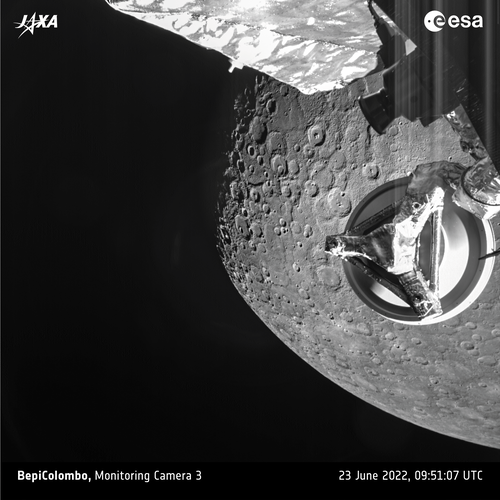
Because BepiColombo’s closest approach was on the planet’s nightside, the first images in which Mercury is illuminated were taken at around five minutes after close approach, at a distance of about 800 km. Images were taken for about 40 minutes after the close approach as the spacecraft moved away from the planet again.
As BepiColombo flew from the nightside to dayside, the Sun seemingly rose over the cratered surface of the planet, casting shadows along the terminator – the boundary between night and day – and highlighting the topography of the terrain in dramatic fashion.
Jack Wright, a member of the MCAM team, and a research fellow based at ESA’s European Space Astronomy Centre (ESAC) in Madrid, helped to plan the imaging sequence for the flyby. He said: “I punched the air when the first images came down, and I only got more and more excited after that. The images show beautiful details of Mercury, including one of my favourite craters, Heaney, for which I suggested the name a few years ago.”



